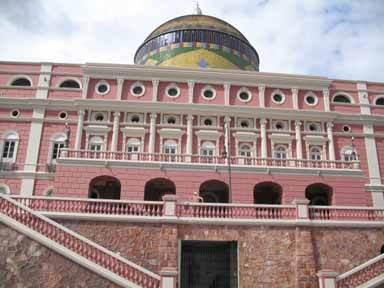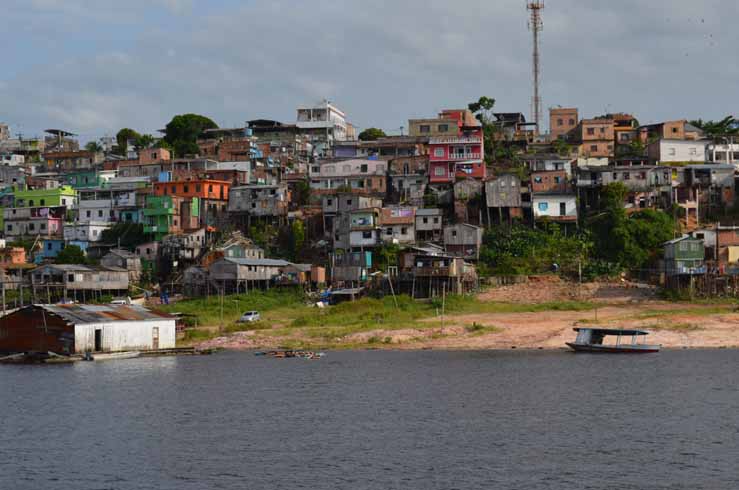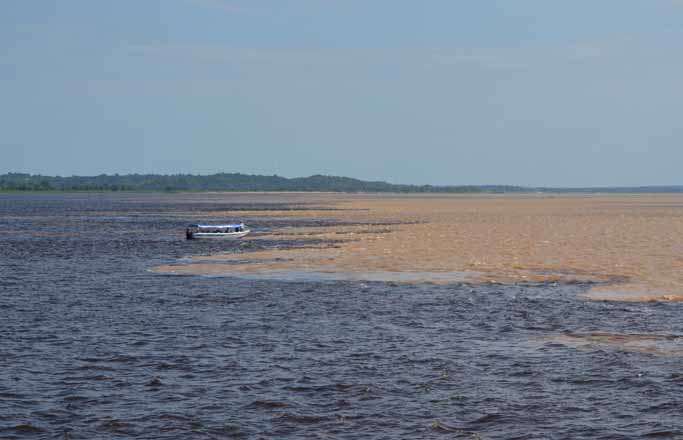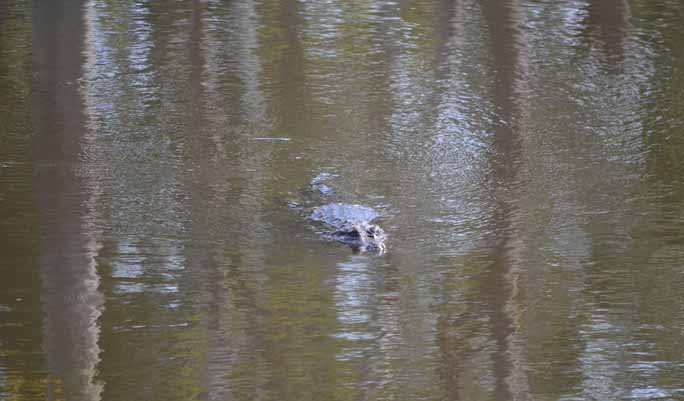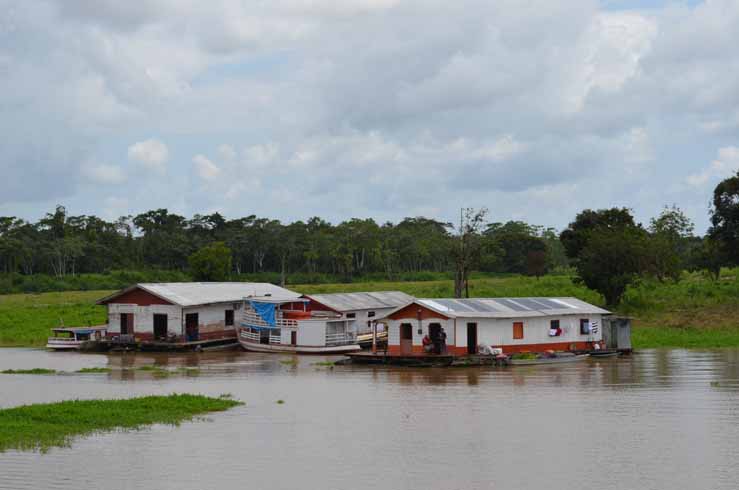Read Time:3 Minute, 35 Second
We arrived at Manaus on Monday 21st January. Manaus is the capital of the state of Amazonas. It is situated at the confluence of the Negro and Solimões rivers. It is the most populous city of Amazonas,and is a popular ecotourist destination. Manaus belongs to mesoregion Center Amazonense and microregion Manaus. It is located in northern Brazil, 1,203 miles from the federal capital, Brasília and almost 1000 miles from the Atlantic.
The city was founded in 1669 as the Fort of São José do Rio Negro. It was elevated to a town in 1832 with the name of “Manaus”, which means “mother of the gods” in tribute to the indigenous nation of Manaós, and legally transformed into a city on October 24 of 1848 with the name of Cidade da Barra do Rio Negro, Portuguese for “The City of the Margins of Black River”. Only on September 4 of 1856 did it revert to its current name.
The population in 2012 was 1.85 million people; it is the most populous city in North Region and seventh most populous city of Brazil. Manaus alone represents 10.89% of the population of the whole of Northern Brazil and 49.9% of the population of the Amazon.
Manaus was at the centre of the Amazon region’s rubber boom during the late 19th century. For a time, it was “one of the gaudiest cities of the world”. One historian has written, “No extravagance, however absurd, deterred” the rubber barons. “If one rubber baron bought a vast yacht, another would install a tame lion in his villa, and a third would water his horse on champagne.”
The city’s most famous monument is the opulent, world-renowned Opera House (Teatro Amazonas). It is a focal point of the city and is built entirely of bricks, tiles and materials brought piece by piece from Europe. The construction started in 1881 and took 15 years to build at a cost of $10 million. Behind the neoclassical facade, the interior columns and bannisters are of English cast iron, the stage curtains were painted in France, where the chandeliers and mirrors also came from; the marble originates from Italy and the porecain from Venice. Paintings include works from Capranesi and De Angelis. The green, yellow, red and blue doem is made up of tiles imported from Alsace, France. The driveway was paved with rubber to prevent the sounds of carriage wheels spoiling performances. Caruso sang here and Anna Pavlova danced.
Visitors can have a guided tour of the Opera House for 10 Real per person, which I thought was very good value.
Overlooking the docks is the old Customs House, prefabricated in Liverpool and shipped here over a century ago. The tower once acted as a lighthouse guiding vessels in at night.
This was one of the few ports where we were docked overnight, which enabled many of the crew to sample the nightlife (there were quite a few pasty-looking faces and red eyes the following day!). We were on an organised tour “Discover the Amazon” on our second day. This included a boat ride to the ‘Meeting of the Waters”, where the black waters of the Negro River meet the brown waters of the Solimoes River, flowing side by side without mixing for about 6 miles. This natural phenomenon is caused by the confluence of the Negro River’s dark water and the Solimões River’s muddy brown water that come together to form the Amazonas River. The waters don’t mix because of the great difference between the water temperatures and current speeds.
Our tour also took in an exploration of some of the small tributaries and lakes, and a visit to the Terra Nova Caboclo’s Village, where we were able to see examples of floating houses, giant water lilies and a wide variety of indigenous birds. This is where I also spotted not one but two of the rare black cayman, the largest of the species, which can grow to over 3 metres.
The Opera House
Manaus Waterfront
Meeting of the Waters
Black Cayman
Floating Houses, Terra Nova Caboclo’s Village
Next ports of call – Parintins and the Boi Bumba carnival. A real taste of what Brazilians do best – dressing up in exotic costumes, dancing and having fun!
I’m a life-long learner with an insatiable curiosity about life. I love travel, good food, and good company. I’m happy to share what I know with others….even the interesting stuff! My outlook on life is pretty well captured in this quote from a book about the legend of King Arthur:
“The best thing for being sad,” replied Merlin, beginning to puff and blow, “is to learn something. That’s the only thing that never fails. You may grow old and trembling in your anatomies, you may lie awake at night listening to the disorder of your veins, you may miss your only love, you may see the world about you devastated by evil lunatics, or know your honour trampled in the sewers of baser minds. There is only one thing for it then — to learn. Learn why the world wags and what wags it. That is the only thing which the mind can never exhaust, never alienate, never be tortured by, never fear or distrust, and never dream of regretting. Learning is the only thing for you. Look what a lot of things there are to learn.”
― T.H. White, The Once and Future King
So much to learn, so little time!

Happy
0
0 %

Sad
0
0 %

Excited
0
0 %

Sleepy
0
0 %

Angry
0
0 %

Surprise
0
0 %
